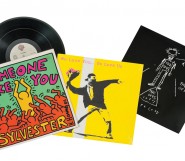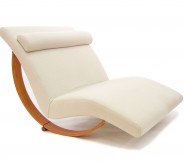Lot #66 - John Olsen
-
Auction House:Bonhams Australia
-
Sale Name:Important Australian Art
-
Sale Date:11 May 2022 ~ 7.30pm (AEST)
-
Lot #:66
-
Lot Description:John Olsen
(born 1928)
Gypsy Caravan 1, 1989
watercolour, gouache and pencil on paper
102.5 x 124.5cm (40 3/8 x 49in).
signed lower right: 'John Olsen'; inscribed with title lower left: 'Gypsy Caravan 1' -
Provenance:Pels, Innes, Neilson & Kosloff, Melbourne; Christies, Melbourne, 27 November 2001, lot 54A; Private collection, Melbourne; Private collection, Sydney
-
Exhibited:John Olsen, Greenhill Galleries, Perth, 24 October - 9 November 1989, cat. 20; John Olsen, Australian Galleries, Sydney, 2 - 28 April 1990, cat. 14, titled Robert Graves on the Gypsy Caravan; John Olsen, Australian Galleries, Collingwood, Victoria, 5 - 23 March 1991, cat. 13, titled Robert Graves on the Gypsy Caravan; John Olsen Retrospective, National Gallery of Victoria, Melbourne, 1 November 1991 - 2 February 1992
-
References:Deborah Hart, John Olsen, Sydney, 1991, fig. 61, p. 218, illus. p. 201 (incorrectly labelled as fig. 59; Jenny Zimmer & Ken McGregor, John Olsen "Journeys into the You Beaut Country", by p. 149, illus. p.152;; John Olsen 'Drawing - The Human Touch", Macmillan Art Publishing 2014, illus. p.333
-
Notes:In 1955 following Olsen's first solo exhibition at Macquarie Galleries, critic and fellow artist Paul Haefliger singled out Olsen as the most promising emerging artist of his time, and, on his recommendation encouraged businessman Robert Shaw to act as patron, sponsoring Olsen to travel extensively through Europe in lieu of paintings. These travels through Spain, established a deep appreciation of its exciting culture and cuisine, both having a transformative effect on the development of his art. 'I remember stopping for lunch at a tiny fishing village, and there like a table cloth laid out upon the sand were long fishing nets – men and women dressed in black but barefooted, donkeys, carts, fishing baskets. Unlike France which seemed all air and atmosphere, this was figured in an air of symbolism, the shadows for example were more distinctive and fascinating than the actors who cast them. The yellow sand, the white village houses, the cart wheels in shadow reveal an intense atmosphere of surrealism. In an instant, I could understand the Spanish tradition [of] Zurbarán, Velasquez, Goya, Dali, Picasso'1 as well as Spanish poet and playwright Frederico Garcia Lorca. 'There is a striking continuity of philosophical concern expressed in Olsen's journal of the late 1950s and those underpinning his works in the 1980s. It was as though he had set up a hypothetical framework of ideas that had evolved and deepend over the years. Since his early visit to Spain he had a been greatly impressed by Lorca's poetry, particularly the 'Gypsy Ballads', which he described as the 'art of a somnambulist'. To grasp the full implications of Olsen's Gypsy Caravan series, it is necessary to understand Lorca's notion of the gypsy. Lorca said that being born in Granada gave him a feeling for the oppressed people of his country and, among them, none were more significant that the gyspy. Of these outcasts from society Lorca wrote: 'The Gypsy is the loftiest, most profound and aristocratic element of my county, the most representative of its mode, the very keeper of the flowing embers, the blood, and alphabet of Andalusian and universal truth'. For Olsen, the gypsy caravan, in his gouaches and large oil Becket Joins the Gypsy Caravan (Private collection), was the ultimate symbol of creative and spiritual liberation: Lorca adored gypsies and he thought they were the real poets of Spain. There were the outsiders. To be on the gypsy caravan is freedom, it is independence from all those who want to dominate us. Iti is about not conforming to the pressures of society; there are no frontiers. You have to qualify in these categories to get on board. And it's a Spanish thing to be on the gypsy caravan. On that level it is very high. In December 1987, Olsen had again returned to Spain, visiting the grave of the poet and author, Robert Greaves, whom he had befriended and whose sixty-fourth birthday he had celebrated in Deya almost three decades before. In the work on paper, Gypsy Caravan 1 (the present work), he includes a small, thinly pained portrait of Graves on the dark caravan... inscribed above Greaves's portrait is the notation: 'Don't say anything more, eat your eggs & move on. The bureaucrats arrive this morning'.2 Alex Clark 1. Deborah Hart, John Olsen, Craftsman House, Sydney, 1991, p. 37-38; 2. Ibid., p. 201
-
Estimate:A$45,000 - 55,000
-
Realised Price:
-
Category:Art
This Sale has been held and this item is no longer available. Details are provided for information purposes only.










